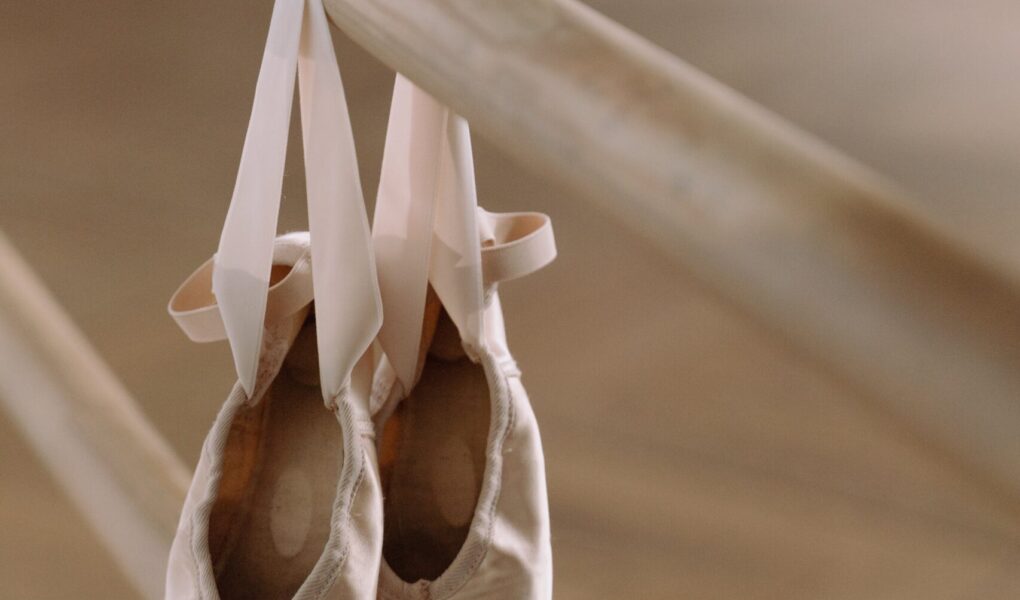Layla Barber, a 19 year-old dancer at the Alvin Ailey School in New York City sits on the floor of one of 16 studios in the building. She pushes her feet into a tight rigid box, made of packed layers of fabrics and hardened by glue, all a part of a shoe that will hold her body weight as she balances and moves across the studio floor. In the background plays their class playlist, starting off with “Roll Downs” by Fat Coda Studios.
The Alvin Ailey school, founded by choreographer Alvin Ailey in 1958, was originally built in Brooklyn, NY, and is guided by Ailey’s mission that dance is for everybody. Ailey studied under Lester Horton, who was the founder of one of the first racially-integrated companies in the United States. The Ailey School is now located at 405 W 55th St, in the heart of Manhattan. It accepts students from all over the world, ages 17-25, and offers training in classical and contemporary styles, most famously the Horton technique, named after and created by Lester Horton. The main mission of the Ailey School is to bring African-American dance to all and create a space for dancers of color.
“I think it’s really nice being at the Ailey School, because it’s made by dancers that look like us, and I feel like that’s such a rare thing to experience especially in a dance environment,” says the 19-year old dancer.
Having a parent in the military, Layla moved around a lot when she was younger. However, no matter where in the world she ended up in, she was continually one of, if not the only, dancer(s) of color in the space.
“It’s historically built for people who don’t look like me,” Layla says about dance, specifically classical techniques, or most famously ballet.
The ballet realm seems to be experiencing a delay in inclusivity as it was merely 8 years ago, in 2015, that Misty Copeland became the first African American woman to be promoted to principal at the American Ballet Theater. Today, Black representation in ballet ranges from 15 dancers at Dance Theater of Harlem, to only 1 at Miami City Ballet. Overall, Black dancers make up 5.5% of all dancers in major companies around the country, making places in a professional company extremely difficult to get. Only 10% of the already low number of Black dancers ever get promoted to principal.
“Diversity in dance is something I’m constantly faced with,”says Sophia Cooper, a 20 year old dancer, also attending the Ailey School.
Sophia grew up in Lexington, Kentucky where she danced at a famous studio in the area. Both Layla and Sophia have been dancing since they were toddlers, starting their journeys around ages 2 and 3. Until their arrival at The Ailey School, they never experienced inclusive dance environments.
Compared to previous statistics as they pertain to the entire country, the Ailey School’s student body is made up of 24% of Black dancers, with an added 8% of Hispanic and 12% of dancers of two or more races. This puts The Ailey School at the forefront of inclusive dance spaces with 44% of their student body being made up of dancers of color, according to statistics from the school year 2016-17.
Layla and Sophia’s past is shared by Adrienne Ming, a professional dancer and professor at the Roehampton University in London, who says: “I think that in a dance classroom was the first time I noticed I was Black”.
Whether it be the mesh on her costumes that didn’t quite match her skin tone, or the pointe shoe fabric that stood out for being entirely too light, Ming grew up aware of what made her different from her peers.
“Of course being a young Black dancer, you always look to Alvin Ailey because you’re like this is us, we look so powerful and beautiful and we’re loved here in this space,” says Ming.
Besides The Ailey School, Ming is making strides in her own classroom by removing ballet from the dance pedestal it has been on for centuries. She does so by teaching many modern techniques that celebrate different bodies and cultures, including twerking.
“The more that shakes and the more that moves, the more correct it is,” Ming says. She makes her classroom a space of exploration that breaks tradition and embraces both different contemporary styles, and the relinquishing of all forms.
Alvin Ailey is, however, a pioneer in portraying and popularizing Black American dance as a vital American dance style, and one that is never to be ignored again. His legacy is reflected in all the dancers around the country and the world who look to The Ailey School as an inspiration, and in students like Layla and Sophia.
“Just walking in, on the first day, seeing so many dancers of color and honestly being in a room with so many people of color was something that I had never experienced in my life, and so everything that this school is doing is so important but also it needs to be done at so many other places,” says Sophia Cooper.




